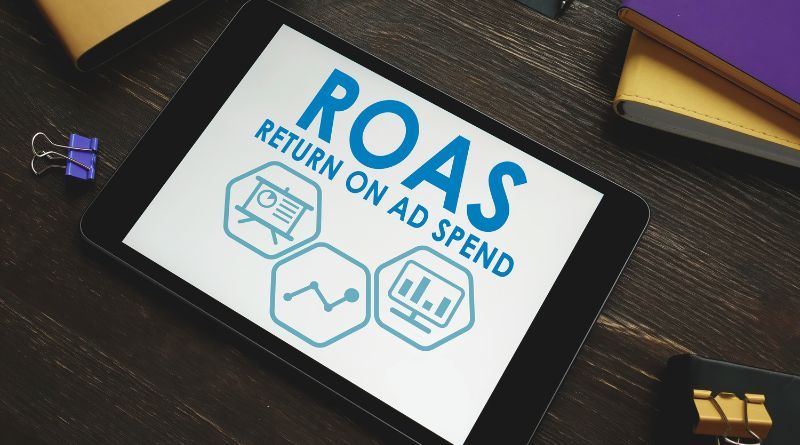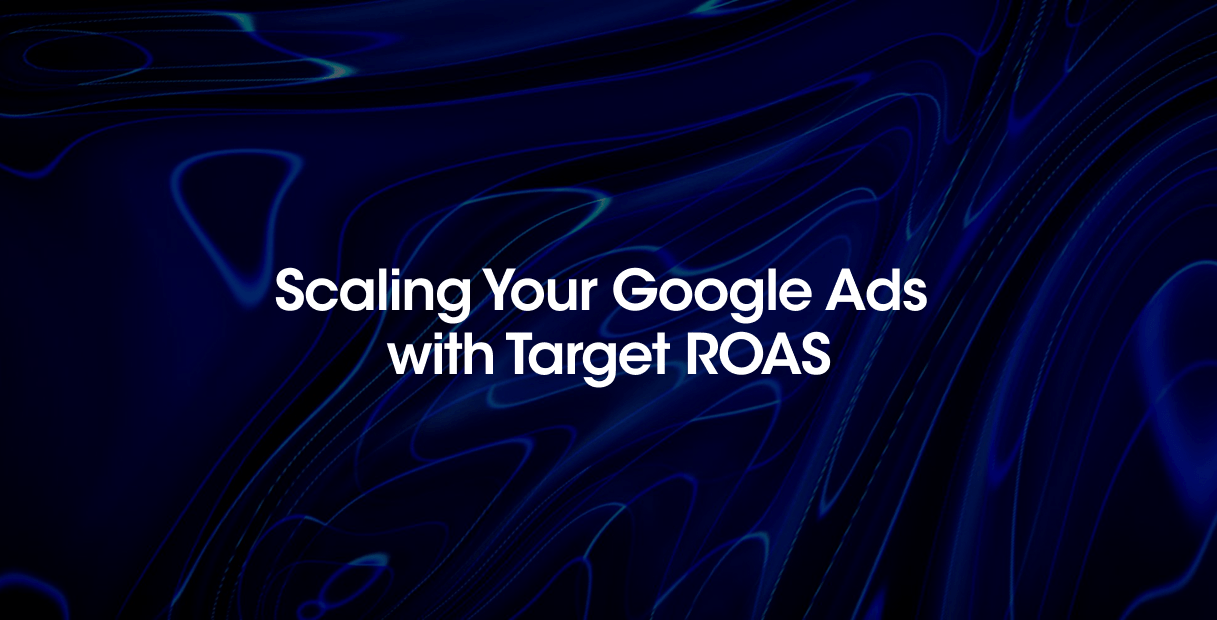Related Blogs
How to Scale Your Google Ads with a Target ROAS Bid Strategy
Scaling your campaigns while maintaining profitability is a challenge for many advertisers. This is where Target ROAS (Return on Advertising Spend) comes in. In this guide, we’ll explain how Target ROAS in Google Ads works, when to use it, and how to set it up.
What is Target ROAS and How Does It Work?
Target ROAS is a Google Ads bid strategy designed to optimize your bids based on a target return on advertising spend. It measures how much revenue you earn for every dollar spent on advertising.
For example, if your target ROAS is set to 400%, Google Ads will aim to generate $4 in revenue for every $1 spent. The system uses historical conversion data and machine learning to adjust bids in real-time. It prioritizes clicks that are likely to drive high-value conversions.
This automated approach saves time and maximizes revenue potential. However, it relies on accurate conversion tracking to succeed.
When to Use Target ROAS
You should use Target ROAS when:
- You have consistent conversion data (at least 20-30 conversions per month).
- Your business prioritizes revenue growth over just increasing conversions.
- You sell products or services with variable price points (e.g., e-commerce).
- You want automatic bid adjustments to maximize ad spend efficiency.
Avoid using this strategy if your account lacks sufficient conversion data. In such cases, other bidding strategies like Target CPA may perform better.

Pros and Cons
Pros:
- Maximizes profitability: Focuses on high-value conversions.
- Automation: Google adjusts bids in real-time, reducing manual work.
- Scalability: Helps scale campaigns without sacrificing return on ad spend.
Cons:
- Requires sufficient data: Needs at least a few weeks of solid conversion tracking to work well.
- Less control: Google’s automated system may prioritize conversions differently than expected.
- Learning curve: Initial performance may fluctuate as Google optimizes bids.
When to Use Different Bidding Strategies
The table below outlines when to use various Google Ads bidding strategies based on your campaign goals.
Bid Strategy | When to Use |
Target ROAS | When you want to maximize return on ad spend (revenue-focused). |
Target CPA | When you want to maximize conversions at a fixed cost per action. |
Maximize Clicks | When you want to drive more traffic to your site. |
Maximize Conversion Value | When you want to increase total revenue without a specific target. |
Manual CPC | When you want full control over bids. |
Target ROAS vs. Target CPA
Both Target ROAS and Target CPA are automated bidding strategies designed to maximize ROI, but they differ in focus.
Target ROAS aims to increase revenue by optimizing bids to meet a set revenue-to-ad spend ratio. It prioritizes high-value conversions, helping allocate budgets to campaigns that yield the best returns. Choose this strategy if your goal is to grow revenue at a specific return.
Target CPA focuses on maximizing conversions at a fixed cost per acquisition. Bids are adjusted to achieve the target CPA while driving as many conversions as possible. Use Target CPA when controlling costs per conversion is your main priority.
Target ROAS vs. Maximize Conversion Value
Both strategies focus on maximizing revenue, but they serve different purposes.
Target ROAS optimizes bids to achieve a specific target, helping businesses balance ad spend with conversion value. Use this strategy if you want revenue at a precise return ratio.
Maximize Conversion Value focuses on maximizing total revenue within a set budget. It automatically adjusts bids to achieve the highest value without a specific target. Opt for Maximize Conversion Value when your priority is to generate the most revenue within your budget.
Target ROAS vs. Manual CPC
These strategies offer different levels of control over ad spending.
Target ROAS automates bids to achieve a target revenue-to-ad spend ratio, focusing on high-value conversions. Choose this for automated, data-driven revenue optimization.
Manual CPC gives businesses full control over maximum bids for keywords, ad groups, and campaigns, allowing precise budget management. Use Manual CPC if you prefer to manage bids manually and maintain complete control over your ad spend.
Target ROAS vs. Maximize Clicks
Target ROAS and Maximize Clicks both adjust bids automatically but aim for very different outcomes.
Target ROAS focuses on maximizing revenue by meeting a target return on ad spend. It prioritizes high-value conversions, optimizing bids based on conversion value rather than traffic volume. Use this strategy if your goal is to achieve a specific revenue target.
Maximize Clicks aims to drive as much website traffic as possible within your budget. It does not factor in conversion value or return. It’s useful for awareness campaigns or when conversion data is lacking. Opt for Maximize Clicks when you want to increase traffic without immediate concern for conversions or revenue.
Setting Up Target ROAS in Google Ads
You can apply an automated bidding strategy to any of your Search, Display, Shopping, or Performance Max campaigns. To set up Google Ads ROAS bidding, follow these steps:
- Sign in to your Google Ads account.
- Navigate to the “Campaigns” tab and select the campaign you want to optimize.
- Click on “Settings” and under “Bidding” select “Target ROAS.”
- Enter your desired percentage (e.g., 400% for a 4:1 return).
- Save your settings and allow time for Google to optimize bids based on your target.
Don’t know how to calculate your target ROAS? The formula is:
ROAS = (Revenue / Ad Spend) × 100

Best Practices
- Set up accurate conversion tracking: Ensure all conversion actions are tracked correctly. Without proper data, machine learning can’t optimize bids effectively.
- Build a strong data foundation: Campaigns with more historical conversion data enable faster and more accurate optimization. Google’s algorithms rely on this data for better performance. Aim for at least 20-30 conversions per month before switching to Target ROAS.
- Start with a conservative target: Set an initial Target ROAS close to your current performance (e.g., the ROAS achieved with a previous strategy). Gradually increase the target as performance stabilizes.
- Monitor and optimize regularly: Review campaign performance frequently. Adjust ad copy, campaign structure, and negative keywords to improve traffic quality and maintain a stable ROAS.
- Improve your website’s conversion rate: A higher conversion rate boosts your ROI and helps Google’s system meet your goal more efficiently. Ensure your landing pages are optimized for user experience and conversion.

Mistakes to Avoid
- Missing Conversion Values: Target ROAS requires conversion values to function. If your account doesn’t track revenue from purchases, the strategy won’t work. Link product prices to Google Ads under: Tools & Settings → Conversions → Purchases. Set the value to “Use different values.”
- Incorrect Conversion Tracking: Google’s algorithm needs accurate tracking data to optimize bids. Improper setup can lead to unreliable results. Set “Purchases” as your primary conversion action. Secondary actions should not influence calculations. Avoid duplicate tracking by using only one primary purchase event.
- Insufficient Data: Automated bidding needs conversion history to perform well. Starting a campaign with no data can hurt performance. Use Manual CPC or Maximize Conversions until you gather at least 20 conversions before switching to Target ROAS.
- Unrealistic Targets: Setting a target too high can prevent your ads from being shown. Start with a target close to your current ROAS. Gradually increase it (e.g., from 200% to 250%) after the learning phase.
Achieve Growth with Target ROAS
Using a Target ROAS strategy can help you scale your campaigns by focusing on high-value conversions. Set realistic goals, monitor performance, and avoid common mistakes. This helps maximize your return on ad spend and drive profitable business growth.
Struggling with your ads? Book a 1-on-1 Coaching Session or Schedule a Call today!
Affiliates Program
Join Our Affiliate Program
Earn commissions by referring clients to WeScales.io.
- High Payouts
- Exclusive campaign insights.

